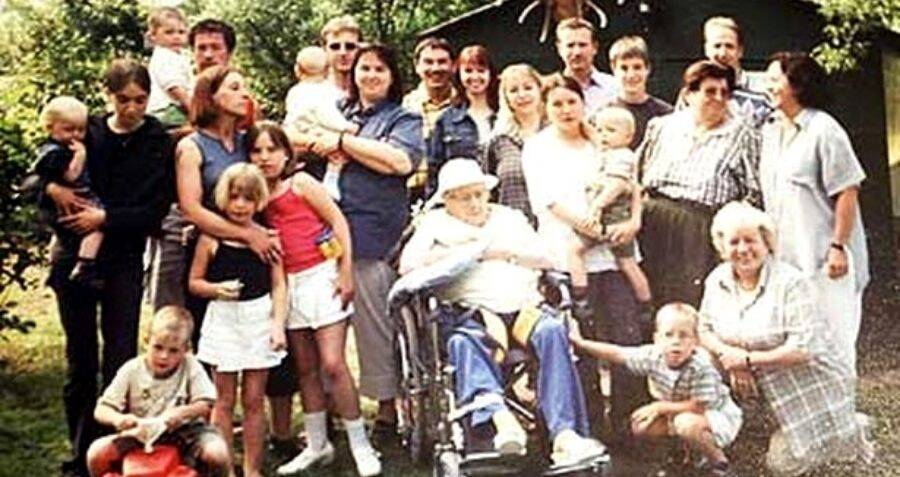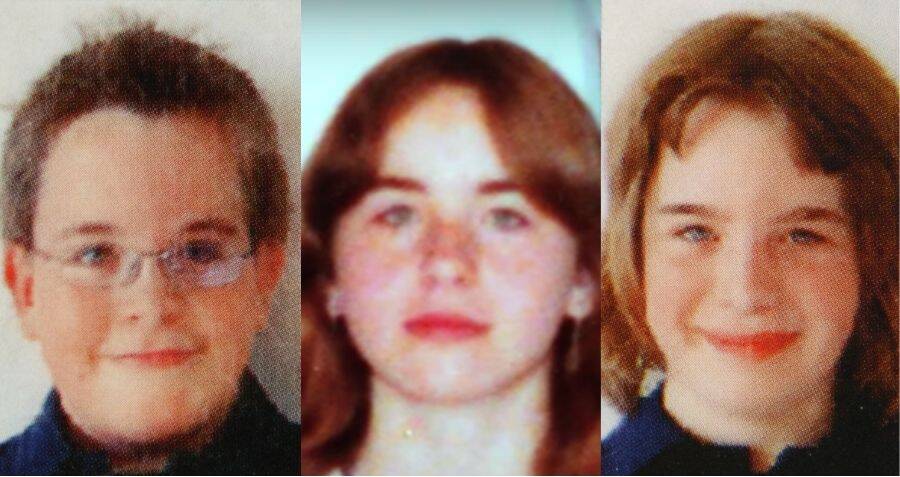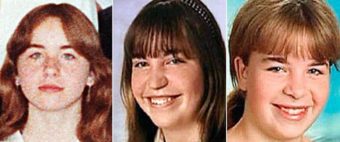There are some stories that, you know, really grab your attention, and then they just stay with you, sometimes for a very long time. The situation involving Elisabeth Fritzl and her children is, quite honestly, one of those deeply affecting accounts that truly highlight the incredible strength of the human spirit when faced with unbelievable hardship. It is a story that reminds us of the profound need for understanding and kindness, particularly when people are trying to put their lives back together after experiencing something truly awful. We are talking about individuals who, in a way, endured conditions that most of us can barely even imagine, and their subsequent journey toward a sense of normalcy and peace is something that really deserves our thoughtful consideration.
For many, the details of what happened were, quite frankly, shocking, and it is almost hard to wrap your head around it. But behind the headlines and the public’s initial reactions, there are real people, young individuals who were brought into the world under circumstances that were anything but typical. Their lives, from the very start, were shaped by isolation and a lack of freedom, something that, you know, is just so contrary to what any child should ever experience. This piece is not about dwelling on the dark parts of their past, but rather, it is about looking at the path they have been on since gaining their freedom, focusing on their well-being and the quiet courage they have shown.
Our purpose here, you see, is to consider the lives of these young people, the Elisabeth Fritzl children, as they have moved forward, trying to build new existences away from the public gaze. It is about recognizing the immense challenges they have faced, and continue to face, in their pursuit of a quiet, ordinary life. We want to approach this sensitive topic with the respect and empathy it surely requires, putting their healing and their right to privacy at the forefront of our thoughts. It is a chance to think about how society, in general, can best support those who have lived through such profoundly difficult times.
- Prince Cause Of Death
- Sandra Bullock Kids
- Jewel Songs
- William Moseley Movies And Tv Shows
- Victoria Spader
Table of Contents
- The Journey of Elisabeth Fritzl Children
- Finding a New Start for Elisabeth Fritzl Children
- What Challenges Face Elisabeth Fritzl Children?
- The Importance of Privacy for Elisabeth Fritzl Children
- How Does Society Support Elisabeth Fritzl Children?
- Creating a Safe Space for Elisabeth Fritzl Children
- What Lessons Can We Learn From Elisabeth Fritzl Children's Story?
- Resilience and Hope for Elisabeth Fritzl Children
The Journey of Elisabeth Fritzl Children
When we think about the journey these young people have been on, it is, quite frankly, a tale of extraordinary transition. Their early years were spent in an environment that was, to say the least, entirely cut off from the outside world. This meant that simple things we take for granted, like seeing the sun, feeling the wind, or just interacting with others in a normal way, were completely new to them when they finally emerged. Their initial steps into society were, you know, filled with a massive learning curve, as they had to figure out how the world works, basically from scratch. This collective biography, if you will, is not about individual details, which are, quite rightly, kept private, but rather about the shared experience of adapting to a life that was previously unimaginable. It is a process that requires a lot of patience and a huge amount of specialized help, something they have thankfully received.
Their story, in a broader sense, shows us the deep effects of long-term isolation on a person’s development, particularly during those important formative years. It is a reminder that human beings, really, thrive on connection and exposure to a varied world. The path to healing for the Elisabeth Fritzl children has been, and still is, a long one, marked by small victories and, undoubtedly, some difficult moments. They have had to learn everything from basic social cues to how to manage money, and even just how to move around in open spaces. It is a testament to the human spirit’s capacity to adjust, even after such a profoundly challenging start in life. The support systems put in place have been, apparently, crucial in helping them navigate these many new experiences, offering a gentle introduction to a world that was once completely unknown.
We are talking about a process of discovery that is, in some respects, ongoing. For these young people, every day can bring a new experience, a new lesson, or a new way of seeing things that most people learn much earlier in their lives. Their progress, from what has been generally understood, has been steady, showing a remarkable ability to take in new information and adapt. This collective narrative really emphasizes the importance of a calm, consistent environment for those recovering from trauma. It is about providing a sense of safety and predictability, which were, you know, so absent from their earlier existence. The focus has always been on their well-being, allowing them to grow and develop at their own pace, without any pressure from the outside world, which is very important.
Finding a New Start for Elisabeth Fritzl Children
The moment they stepped into the light, so to speak, marked the beginning of a truly new chapter for the Elisabeth Fritzl children. This was not just about physical freedom; it was about the chance to experience a different kind of life, one filled with choices and possibilities they had never known. The initial period was, as you can imagine, focused on immediate care, ensuring their health and safety. After that, the attention shifted to helping them find their footing in a world that was, quite frankly, completely overwhelming. This has involved a lot of specialized support, including medical care, psychological help, and educational opportunities that were, basically, designed to help them catch up on what they had missed. It is a long process of rehabilitation, something that requires immense dedication from many different people.
Creating a new start for them has also meant establishing a stable living situation, somewhere they could feel secure and begin to build a future. This has been done with the utmost care, ensuring that their privacy is protected above all else. The goal has always been to provide them with the tools and resources they need to live as independently as possible, eventually. This involves learning practical life skills, developing social connections, and, you know, just finding hobbies and interests that bring them joy. It is a slow, gradual unfolding of their personalities and capabilities, away from the glare of public interest. They are, in a way, being given the chance to simply be young people, exploring who they are and what they want from life, something that was denied to them for so long, and that is a very good thing.
The journey to a new start is, truly, a deeply personal one for each of the Elisabeth Fritzl children, even though they share a common past. While their experiences were shared, their individual paths to recovery and adjustment will, naturally, be unique. What works for one might not work for another, and that is perfectly fine. The support provided has been, apparently, flexible and adaptable, changing as their needs evolve over time. This approach recognizes that healing is not a straightforward line but rather a complex process with its own ups and downs. The hope, of course, is that they can continue to build lives that are, you know, full of happiness and peace, far removed from the shadows of their early years, and that is what everyone wants for them, really.
What Challenges Face Elisabeth Fritzl Children?
It is, perhaps, easy for us to imagine that once they were free, all their problems would simply vanish. But the reality for the Elisabeth Fritzl children is, you know, far more intricate than that. The challenges they face are, in some respects, deeply rooted in their past experiences and continue to shape their present and future. One of the most significant hurdles is, quite obviously, dealing with the psychological effects of prolonged confinement and trauma. This can show up in many ways, affecting how they interact with others, how they cope with stress, and even how they understand the world around them. It is not something that just goes away with time; it requires ongoing support and understanding from those around them, which is very important.
Another big challenge is, actually, catching up on all the life experiences and learning that most people acquire naturally during childhood and adolescence. Think about it: things like formal schooling, learning about social norms, understanding technology, or even just knowing how to navigate public spaces were completely alien to them. This means there is a massive gap in their general knowledge and life skills that they have had to, and continue to, bridge. This can be, you know, a bit overwhelming at times, and it requires a huge amount of patience and specialized teaching. They are, in a way, learning to live in a world that is completely new to them, and that takes a lot of effort and perseverance, really.
Beyond the personal and developmental hurdles, there is also the ongoing challenge of maintaining their anonymity and privacy. The world, as we know, can be very curious, and there is always a risk that their past could be brought back into the public eye, which would be, frankly, devastating for their continued healing. This means they must live with a certain level of guardedness, even in their new lives. It is a delicate balance between finding freedom and protecting themselves from unwanted attention. This need for privacy is, perhaps, one of the most persistent challenges, as it affects where they can live, who they can trust, and how much of their story they can ever truly share. It is a constant consideration for them and for those who care for them, you know, something that never truly goes away.
The Importance of Privacy for Elisabeth Fritzl Children
For the Elisabeth Fritzl children, privacy is, quite simply, not just a preference; it is an absolute necessity for their well-being and their chance at a normal life. After years of being confined and having their lives controlled, the ability to live anonymously, away from public scrutiny, is, you know, incredibly important for their healing process. Imagine trying to recover from something so profound while constantly feeling like you are being watched or judged. It would be, quite frankly, impossible to truly move forward. Their privacy allows them to learn, grow, and make mistakes like any other person, without the added pressure of being a public spectacle. It gives them the space they need to simply be themselves, which is something they never had before.
The protection of their identities and their current whereabouts is, basically, a cornerstone of their rehabilitation. This means that details about their individual lives, their progress, or their current circumstances are, quite rightly, kept out of the public domain. This is not about secrecy for secrecy's sake, but rather about providing a shield that allows them to build new lives without the constant reminder of their past or the intrusion of unwanted attention. It is a way of giving them back some control over their own narratives, allowing them to define themselves by their future, rather than solely by what happened to them. This level of protection is, in some respects, a collective effort involving legal frameworks, media restraint, and the unwavering commitment of those who support them.
Maintaining this privacy is, you know, an ongoing commitment, one that requires vigilance and a deep understanding of its importance. It is about respecting their right to a quiet existence, free from the sensationalism that often surrounds such cases. For the Elisabeth Fritzl children, this privacy is, truly, a gift, offering them the chance to develop at their own pace, form genuine relationships, and pursue their own interests without the burden of their unique history being constantly highlighted. It allows them to integrate into society as individuals, rather than as symbols of a horrific event. This quiet protection is, arguably, the most vital element in their long-term recovery, giving them the breathing room they need to simply live, which is, you know, what anyone would want for them.
How Does Society Support Elisabeth Fritzl Children?
When we talk about how society has supported the Elisabeth Fritzl children, it is, in a way, a complex picture that goes beyond just providing immediate care. From the moment they were freed, there was a clear recognition that these young people would need a vast network of specialized assistance to help them adjust to life outside. This support has come from various sources, including government agencies, medical professionals, psychological experts, and, you know, dedicated caregivers. The focus has been on creating a comprehensive framework that addresses their physical health, mental well-being, and educational needs, all while ensuring their safety and privacy. It is a long-term commitment, something that requires sustained resources and a compassionate approach.
The legal system, for example, played a crucial role not only in bringing the perpetrator to justice but also in establishing protective measures for the children. This included ensuring their anonymity and setting up structures to manage their future care. Beyond the formal systems, there has been, apparently, a broader societal understanding that these individuals deserve every chance to live full, happy lives. This translates into a general respect for their privacy and a collective desire to see them succeed, even if that support is often quiet and unseen. It is a demonstration of human empathy, really, when a community comes together to help those who have experienced such profound suffering, something that is very important.
Furthermore, the support has involved creating an environment where they can learn and grow without undue pressure. This means providing educational opportunities that are tailored to their unique backgrounds, helping them to develop skills that they missed out on during their early years. It is about fostering a sense of normalcy and stability, which are, you know, essential for anyone recovering from trauma. The goal is to empower them to become independent individuals, capable of making their own choices and pursuing their own aspirations. This ongoing support, while often behind the scenes, is, truly, a testament to society’s capacity for compassion and its willingness to invest in the future of these young people, allowing them to, basically, build a better life for themselves.
Creating a Safe Space for Elisabeth Fritzl Children
Creating a truly safe space for the Elisabeth Fritzl children has been, and remains, a paramount concern. This goes far beyond just physical security; it encompasses emotional, psychological, and social safety as well. Imagine having lived in an environment where safety was, you know, constantly compromised; rebuilding that sense of security is a monumental task. The safe space they inhabit now is one where trust can slowly be built, where they can express themselves without fear, and where they are surrounded by people who genuinely care for their well-being. This involves a carefully managed environment, designed to minimize external stressors and maximize their opportunities for healing and growth, which is very important.
This safe space is also about providing a consistent and predictable routine, something that was completely absent from their previous lives. Routine can be, apparently, incredibly comforting for those who have experienced chaos, offering a sense of control and stability. It allows them to anticipate what comes next, reducing anxiety and creating a foundation upon which they can build. This includes regular therapy sessions, structured learning, and opportunities for healthy social interaction, all within a protected setting. The aim is to foster an environment where they can feel relaxed enough to process their past experiences and, you know, develop healthy coping mechanisms for the future. It is a sanctuary, really, where they can simply be themselves without judgment or fear.
Ultimately, the creation of this safe space is about giving the Elisabeth Fritzl children the best possible chance at a normal life. It is about providing them with the freedom to explore their interests, develop their talents, and form meaningful connections, all within boundaries that protect their privacy and well-being. This long-term commitment to their safety and development is, in some respects, a quiet act of profound kindness, ensuring that their future is not defined by their past. It is a continuous effort, one that adapts as they grow and their needs change, always with the goal of fostering their independence and their capacity for happiness. This nurturing environment is, you know, absolutely
- Eminems Daughter
- Tony Walton
- Ryan Bingham And Hassie Harrison
- Divergent Series Divergent
- Prison Break Seizoen 5


